In almost every gym, the bench press frame is very sought after, the gym does not practice chest feel not practiced! However, you think that holding the bench press frame wild practice will have big pectoral muscles? Truthfully, you can only get further and further away from the perfect pecs. Today may slightly subvert your perception, in addition to first put the bench press to the secondary position, while I also urge you to try two or more movements put together in a row, without rest in between. Abel Albonetti, a Muscle Tech sponsored athlete and member of TeamFitness.com, is a believer in this approach.

Take your favorite bench presses back in line and combine them with variations
1. Start your workout with a flying bird instead of a flat bench press.
It seems intuitive to start chest training with bench presses, which then gradually become a habit. But the thing is, it makes more sense to do the flybirds first. The flying bird allows the chest to perform a deep stretch at the lowest point of the movement and a high-quality contraction at the highest point of the movement, and the focus on maintaining movement normality activates the brain-muscle connection immediately.
This isolation movement also squeezes a lot of blood into the muscles, powering the pump. As for which flyes you should choose, almost any flyes variation will work, from dumbbell flyes at any angle, to ropes, to TRX suspension trainers, to chest clamps.
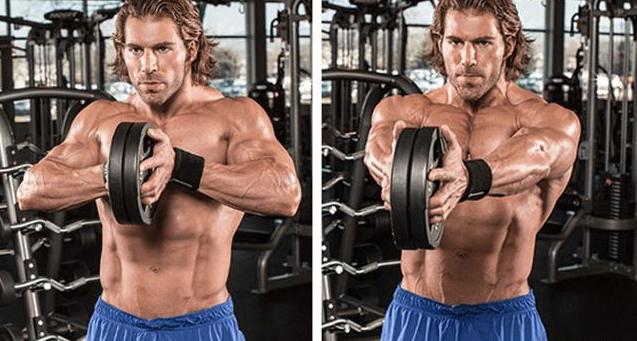
Or, consider these unique variations of the movement.
Barbell Piece Push Press: The focus of this movement is not on the weight, but on squeezing the arms and forcing the pecs to contract as you press with both hands. Remember this and go light. Don't try 45s or even 10s, start with a 2 - 1/2 or 5 pound dumbbell piece until you feel the contraction of the pecs from the outside to the middle with each movement, try to do 2-3 sets of 5-8 reps each, hold the contraction for 10 seconds, then extend the contraction over the next few weeks and months.
Self-weight flyes: This move gets the pecs and core muscles moving. You'll need an open floor and barbell or dumbbells with barbell pieces that roll. If neither apparatus is available, then use a sliding disc or towel on a smooth floor.

Start in a push-up position with your hands on the barbell or dumbbells (disc or towel) instead of on the floor, then slowly push them to your sides while lowering your torso closer to the floor. When you reach the lowest height you can control, pull the barbell back to the starting position and flex your pectoral muscles to maintain body control of the movement.
2. Bench press at different angles
The chest will develop the way you stimulate it, which is why so many people who do nothing but flat bench presses have a thick mid-chest and a flat upper chest. This doesn't look good, but is easily corrected with a certain amount of upward and downward incline pushups.
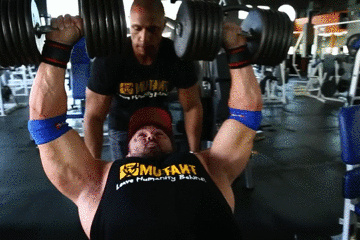
If you are using an adjustable fitness chair, bench press actually has more options, and different heights will give the movement a new angle (45 degrees differs greatly from 30 degrees when stimulating muscle fibers). When you adjust the bench, keep one thing in mind: the higher the angle, the more you can train the anterior deltoid muscle bundle. So, to keep the pressure focused on the pecs, expand the chest with each movement scapula down.
In addition to the typical upward, horizontal and downward incline barbell and dumbbell bench presses, there is a unique variation worth trying: the
One-arm dumbbell bench press: The typical bench press is performed with both arms at the same time, which allows you to carry more weight. Of course, this is a good thing, but the isolated (i.e., one-arm) push press also has its value. One-armed push-ups help regulate imbalances in the pecs on both sides, while also changing how the muscles are burned (one arm means more overall stimulation). Alternatively, isolation push-ups train the core.
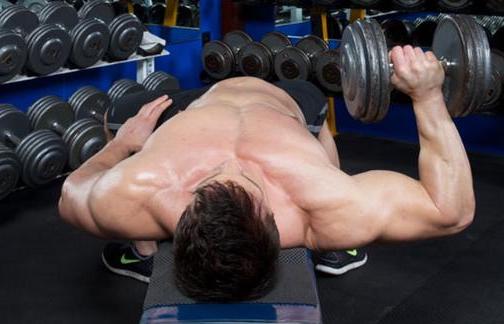
Start this movement by holding a dumbbell down each arm, then do one movement with a single arm. You can alternate arms in a set, or do one set and then switch to the other arm.
3. Hold on
As a rule, movement reps include establishing a rhythm by keeping the weight moving at an even pace over and over. You can also pause for a second at the peak contraction - or go a little crazier and do isometric contractions, trying to hold the contraction for 15-30 seconds. The craziest thing is to hold it until you can't take it anymore.
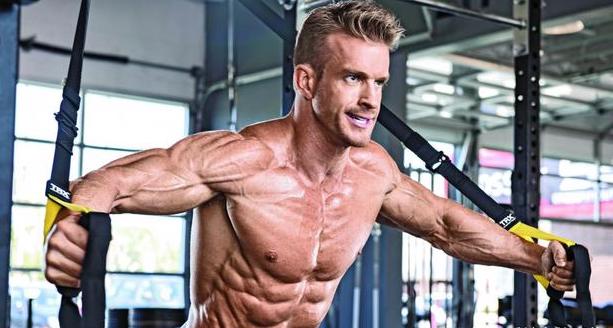
Isometric rope criss-cross chest clamps are a great move to increase the intensity of your chest exercises. Do a set of rope criss-cross chest clamps in the usual way. At the end of the exercise, return your arms to the starting position, release the handles and count 5. Now hold the handle firmly and pull it down to the end position, holding it as long as possible. Leave some force to bring the arm back to the starting position under control without the weight hitting the rack.
4. Train with your own weight
Double bar arm curls and push-ups are very basic and effective. Whether as a training warm-up or a finishing move, with a few changes to the basics, they can be very challenging.
Push-ups: You can put your feet on a step or bench to emphasize the upper pecs, or put your hands on a step or bench with your feet on the floor to train the lower pecs. To add resistance, you can wear a weighted undershirt or tie a resistance band around your back and hold the ends with both hands.
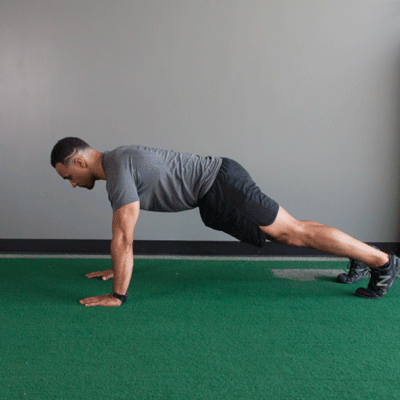
During the movement, you can also set the pace, slow down or do something explosive, such as adding a hand off the floor technique (much like a clap push-up). You can even do multiple variations at the same time in a decreasing set at the end: start with your feet on the step and do push-ups until exhaustion, then put your feet down and do normal push-ups. Do it again to exhaustion with your knees on the ground, and do it a few more times. Finally, stand up, lean against the wall, until exhaustion.
Clock push-ups: Do a traditional push-up, then rotate your body clockwise to the right with your hips as a fixed point. Do another push-up, then rotate again. If you start at 12 o'clock, then the next position is 1 o'clock, then 2 o'clock, and so on until you have made a full circle and end up back in the direction you started. The extra challenge is that each rotation requires the arms to hold the body off the ground and "jump" the body to the next position. On the second round, rotate counterclockwise, one point at a time to the left.
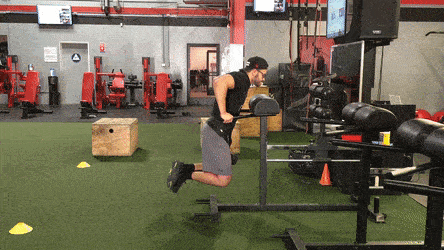
When doing the double bar arm extensions, aim for the chest by leaning forward, rather than keeping the torso straight up and down, so that you can target the triceps more than the pecs. Once you become proficient with the self weighted double bar arm curls, you can start adding weight. You can use a weighted undershirt, a belt with a dumbbell piece, or be rough and just hang a chain around your neck.
Abel Albonetti No Rest Chest Training Program
Abel Albonetti adds supersets to his routine, in addition to multiple movements together without rest in between. He is especially known for his "triple combinations".
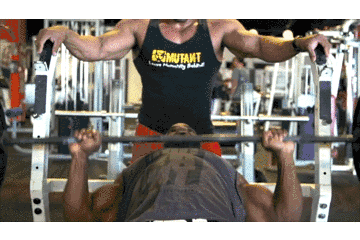
Let's post Abel's training method and try this combination on your next chest training day.
Training movements Number of sets Number of reps
1. supersets
1a. medium grip upper incline barbell bench press 4 12-15
1b. upper incline dumbbell flying bird 4 12-15
2. triple group
Standing tensioner chest clamps 7 12
Standing Rope Push-Up Chest 7 12
High legged push-ups 7 12
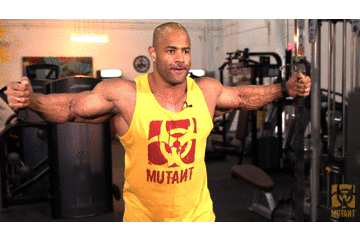
In his chest workout, the triple combination is placed last. Abonetti would do the chest press to absolute exhaustion, then immediately switch to the standing rope push-up - a relatively easy move - and do it again to exhaustion.
Finally, he would put his feet on a bench and do push-ups until he couldn't hold them up. After doing the last push-up, he rests for 45 seconds and then does three more push-ups for a total of seven repetitions. If by the last group, you can't even do a push-up, or simply can't stand up, don't feel too bad, this trio is really devilish.
Popular Articles
-
The world's most mysterious island: Easter Island stands thousands of giant stone statues

-
 Pick a chopping board that suits your needs, so you can cook with ease
Pick a chopping board that suits your needs, so you can cook with easeMay 09, 2025
-
 Fish Glue Soup for Invigorating Qi and Blood
Fish Glue Soup for Invigorating Qi and BloodMay 09, 2025
-
 Improve metabolism to get rid of "fat physique"!
Improve metabolism to get rid of "fat physique"!May 09, 2025
-

Photos
The world's most beautiful big cities at nightMay 09, 2025
-
 Very family-friendly Japanese home furnishings. With them, we can easily improve our happiness at home.
Very family-friendly Japanese home furnishings. With them, we can easily improve our happiness at home.May 09, 2025







Comments
0